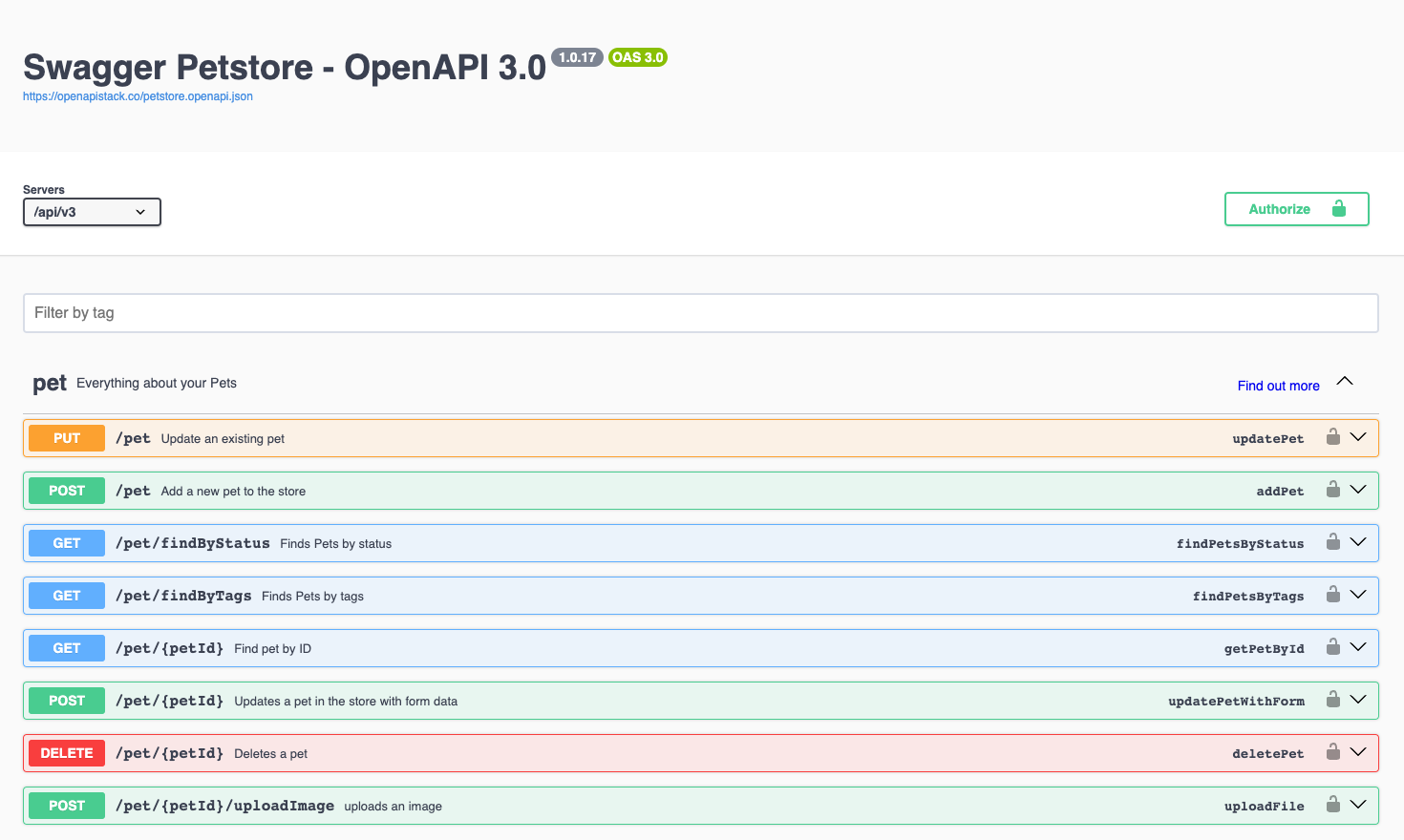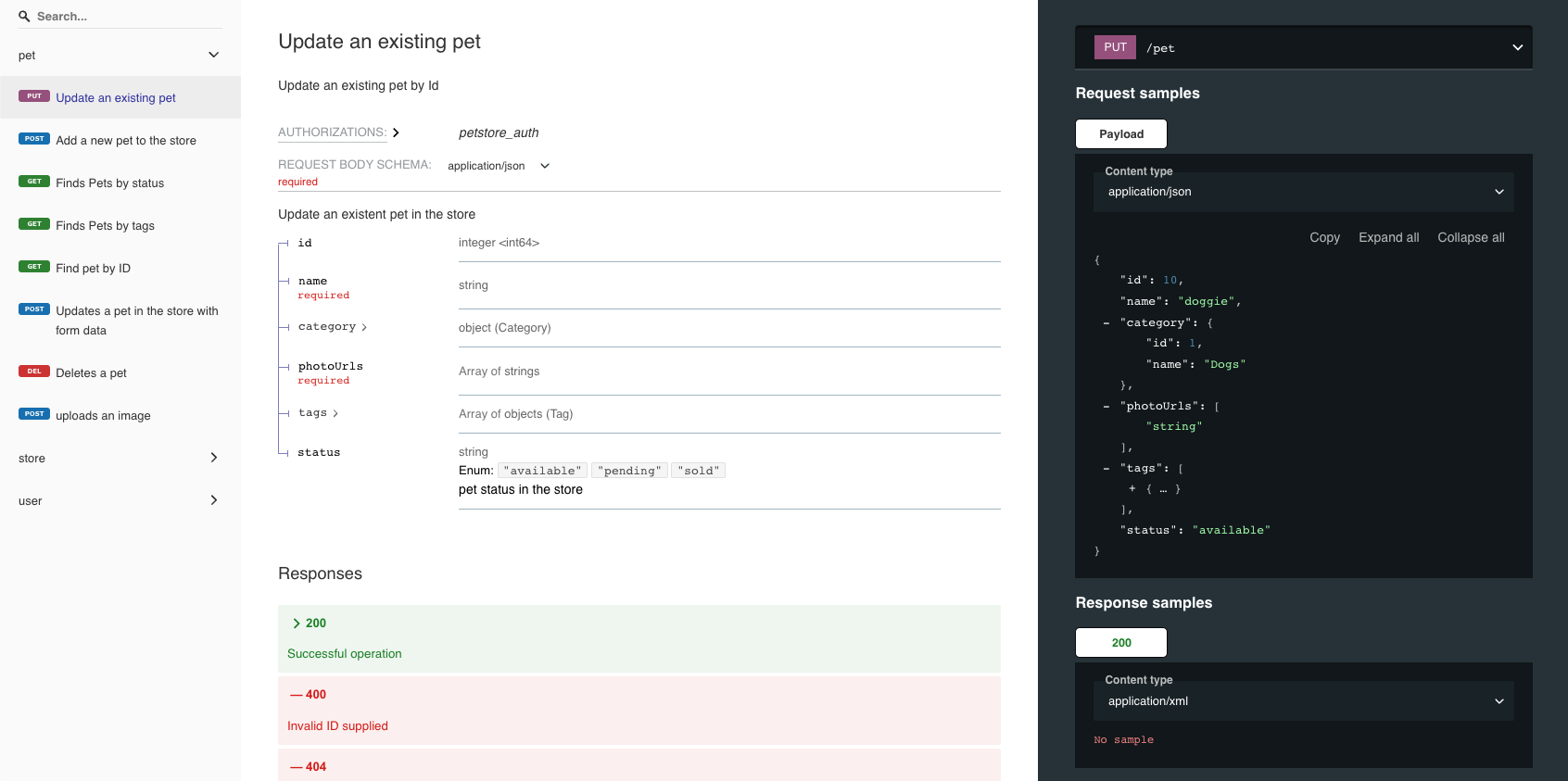Generating Documentation
Swagger UI
Swagger UI is an open source browser interface used to visualize OpenAPI documents.
You can use the swagger-ui command quickly launch Swagger UI in your browser to preview your API.
openapi swagger-ui ./openapi.yml
Swagger UI running at http://localhost:9000
OpenAPI definition at http://localhost:9000/openapi.json
ReDoc
ReDoc is an alternative open source browser interface used to visualize OpenAPI documents in a three-panel, responsive layout:.
You can use the redoc command quickly launch ReDoc in your browser to preview your API.
openapi redoc ./openapi.yml
ReDoc running at http://localhost:9000
OpenAPI definition at http://localhost:9000/openapi.json
Generating Static Documentation
You can create a standalone static website that can be deployed to any static page hosting provider (e.g. GitHub pages or Vercel) using the --bundle option.
To bundle your API documentation into a static website that can be deployed, use the --bundle option.
openapi swagger-ui ./openapi.yml --bundle=outDir
openapi redoc ./openapi.yml --bundle=outDir
Proxy (Avoiding CORS)
Often remote APIs do not support calling from localhost due to CORS configuration. To work around that, you can use the --proxy option to route API requests from Swagger UI via a local proxy to the remote API.
openapi swagger-ui ./openapi.yml --proxy
Swagger UI running at http://localhost:9000
OpenAPI definition at http://localhost:9000/openapi.json
Proxy running at http://localhost:9001/proxy
Swagger Editor
To design and edit OpenAPI files using Swagger Editor, you can use the swagger-editor command:
openapi swagger-ui ./openapi.yml
Swagger Editor running at http://localhost:9000

